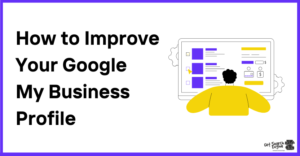The terms AI Agents and Agentic AI are appearing everywhere—from product demos to academic research. They may sound similar, but they represent two very different approaches to building intelligent systems. In a world where automation is no longer enough, the distinction between them is more than technical—it’s strategic.
AI Agents are designed to complete specific tasks. Think of them as smart assistants with limited scope. Agentic AI, however, takes things further. It involves multiple agents working together, often autonomously, to manage complex workflows or decisions.
In this blog, we’ll break down AI agents vs agentic AI. We’ll explore how they function, where they shine, and what challenges they each face. By the end, you’ll know exactly when to deploy one over the other—and why this distinction is crucial as AI continues to evolve.
What Are AI Agents?
AI Agents are like digital employees. They’re built to complete one task at a time, using instructions, tools, and sometimes memory. Most rely on large language models (LLMs) to process prompts and deliver outputs. You’ll often find them in customer support bots, email summarizers, or workflow tools.
What makes them useful? Speed and precision. An AI Agent can search your company’s internal docs and return answers in seconds. It can monitor orders, process returns, or even draft reports. It does one thing—and does it well.
But here’s the trade-off: AI Agents can’t adjust when things get messy. They usually fail if a task shifts mid-way or a new context occurs. They don’t “think” across steps or manage complex workflows. That’s why it’s important to compare AI agents vs AI assistants and, more importantly, AI agents vs agentic AI, to understand which fits best in a modern AI stack.
That’s where agentic AI vs agentic AI systems offer something new.
What Is Agentic AI?
If AI Agents are like solo workers, Agentic AI is a full team. It comprises multiple agents, each handling a part of the process, and working together to solve bigger problems.
Think about your smart thermostat. It adjusts your room temperature based on your settings. That’s an AI Agent. Imagine a smart home where your thermostat talks to your calendar, weather app, and security system. That’s agentic AI systems in action. The agents collaborate, share memory, and react to change together.
At the core, Agentic AI is designed for goal-driven coordination. Instead of responding to a single prompt, these systems break tasks into parts, assign them to agents, and adapt as things evolve. They also remember past actions, making decisions smarter over time.
This means agentic AI examples go far beyond simple automation. In healthcare, agents can read patient history, monitor vitals, and suggest treatments as a team. In logistics, they coordinate routes, handle delays, and reroute deliveries—all without human help.
So, what’s the big deal? Considering the agentic AI definition, it’s clear that this model is built for complexity. It doesn’t just execute. It thinks ahead, adjusts, and collaborates.
AI Agents vs Agentic AI: Breaking It Down
Let’s get straight to the point. The real difference between AI agents and agentic AI comes down to how they think, act, and scale.
Here’s a side-by-side look:
| Feature | AI Agents | Agentic AI |
| Goal Type | One fixed task | Multi-step, evolving goals |
| Memory | Optional, short-term | Persistent, shared |
| Collaboration | Works alone | Multi-agent teamwork |
| Adaptability | Low | High |
| Tool Use | Calls external tools | Assigns agents who use tools |
| Workflow Scope | Single task | Full workflow orchestration |
Still unsure? Think of an AI agent as a fast-food cashier—it takes orders fast. Agentic AI is the kitchen staff working in sync to prepare, time, and deliver your meal right.
Another key contrast in agentic AI vs. AI agents is flexibility. AI agents follow logic and tools, while agentic AI distributes tasks across agents that talk, revise, and learn from outcomes.
Let’s say you’re building a research assistant. An AI agent could search papers. But an agentic system could break the task down—one agent gathers sources, another summarises them, and a third drafts the content. That’s the shift from AI agent vs agentic AI thinking.
Bottom line? Agentic AI isn’t better for everything, but it wins when the job is too big or dynamic for one agent alone.
Real-World Applications: AI Agents and Agentic AI
Let’s see how AI agents vs agentic AI play out in real life.
🔹 AI Agent Applications
- Customer Support Automation
An AI Agent can answer “Where’s my order?” by pulling info from backend systems. It saves time, cuts ticket volume, and keeps customers happy. - Internal Knowledge Search
Companies use AI agents to fetch meeting notes, summarise emails, or generate quick insights. Just ask in plain English, and you’ll get a response, with sources. - Personalized Recommendations
From Spotify to Amazon, AI agents learn what you like and serve music, videos, or products tailored to you.
🔹 Agentic AI Applications
- Collaborative Healthcare Decisions
In hospitals, agentic AI applications are game-changing. One agent reviews vitals, another reads medical history, and another suggests treatment. Together, they support doctors with fast, well-rounded decisions. - Smart Logistics Systems
Think: drones, loaders, and planners all working together. With agentic AI use cases, systems assign tasks, react to delays, and reroute deliveries without human intervention. - Multi-agent Content Generation
In RAG (retrieval-augmented generation), agentic AI systems divide tasks like researching, fact-checking, and drafting among agents, boosting speed and quality.
The line is clear: AI agents excel at doing one thing well. But when the task involves multiple moving parts or decisions that depend on each other, Agentic AI takes the lead.
Limitations: What’s Holding Them Back?
Neither model is perfect. Understanding the downsides of AI agents vs agentic AI can help you choose wisely.
🔹 AI Agents: Fast but Rigid
AI agents are built for efficiency, not flexibility. That creates problems:
- Short-Term Thinking
They lack memory across sessions, so they forget context fast. - Causal Confusion
They often mistake correlation for cause, leading to poor conclusions. - Tool Dependence
Since they rely heavily on APIs or plugins, if the tool fails, so do they.
So while great at single tasks, they crumble under complexity.
🔹 Agentic AI: Smart but Complicated
Now let’s talk agentic AI. It sounds futuristic, but it’s not always easy.
- Coordination Overhead
More agents mean more chances for miscommunication or delay. - Scalability Issues
As the system grows, debugging and managing it become a huge task. - Emergent Behavior
The more agents “talk,” the harder it is to predict what they’ll do.
If you’ve wondered how agentic AI works, this is where it gets tricky: it’s powerful, but complexity can spiral fast.
Conclusion: Picking the Right Tool
When comparing AI agents to agentic AI, it’s not about which is better—it’s about what fits.
AI agents are great when tasks are simple, repetitive, and well-defined. They’re fast, focused, and efficient. But when problems get bigger and require coordination or adaptability, Agentic AI becomes the smarter choice.
Are you still wondering about agentic AI vs. AI agents? Think task runner vs. task manager. One executes, the other orchestrates.As businesses grow more data-driven and AI-native, knowing what an agentic AI is can help you deploy the right solution without overengineering or underdelivering.





Leave a Reply